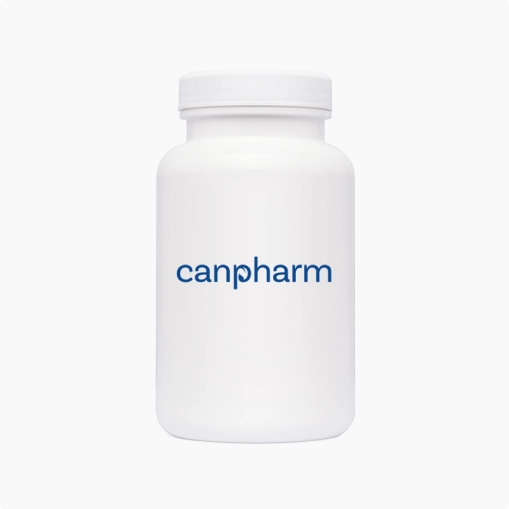
Hizentra (Immunoglobulin (Human))
| Dose | Size & Price | Qty |
|---|
-
Description
-
Reviews (0)
-
Related Products
-
Related Conditions
Fact Table
| Fact Table | |
|---|---|
| Formula | Not applicable (biologic product – mixture of IgG antibodies) |
| License | FDA approved |
| Bioavailability | ~73% (subcutaneous) |
| Legal status | Prescription only |
| Chemical Name | Immunoglobulin G (Human) |
| Elimination half-life | Approximately 28–42 days (varies with condition and patient) |
| Dosage (Strength) | 20% solution (200 mg/mL) |
| Pregnancy | Use only if clearly needed; consult healthcare provider |
| Brands | Hizentra |
| Protein binding | High (IgG binds to Fc receptors and antigens) |
| PubChem CID | Not available (biologic product) |
| MedlinePlus | a610024 |
| ChEBI | 36080 |
| ATC code | J06BA01 |
| DrugBank | DB11110 |
| KEGG | D10320 |
| Routes of administration | Subcutaneous (SC) |
Hizentra is a ready-to-use 20% liquid immunoglobulin (human) solution indicated for subcutaneous administration. It is used to treat primary immunodeficiency (PI) and chronic inflammatory demyelinating polyneuropathy (CIDP) in adult and pediatric patients two years of age and older. Hizentra provides consistent immune support by maintaining appropriate IgG levels in individuals with weakened immune systems. Patients looking to buy Hizentra benefit from its self-administered subcutaneous delivery, allowing greater independence and treatment flexibility. Hizentra prefilled syringes are designed for ease of use and consistent dosing, promoting patient adherence and reducing infusion preparation time.
Directions
Hizentra should be administered subcutaneously according to a physician’s instructions, with dosage tailored to each patient’s body weight, clinical response, and serum IgG levels. For patients with PI, maintenance therapy generally involves weekly administration. For those with CIDP, Hizentra may be used as a maintenance therapy following IVIg induction. Patients must be trained on proper infusion techniques before initiating home therapy. Hizentra prefilled syringes should be stored refrigerated or at room temperature, away from light, and used within the product’s expiration guidelines.
Ingredients
Each milliliter of Hizentra contains 0.2 g (20%) immunoglobulin (human), glycine as a stabilizer, and water for injection. It is free from preservatives, proline, sucrose, and polysorbates. The immunoglobulin is derived from pooled human plasma, screened and processed to minimize the risk of viral transmission.
Cautions
Patients with a history of thrombosis, renal dysfunction, or known risk factors for these conditions should use Hizentra with caution. Adequate hydration is recommended before infusion, and the product should be administered at the lowest effective dose and rate appropriate for the patient. Periodic monitoring of renal function, serum IgG levels, and infusion site tolerance is advised. Patients and caregivers should be informed about the signs of hypersensitivity, hemolysis, and aseptic meningitis. It is important to consider the Hizentra cost when planning long-term therapy, and patients may consult their healthcare provider or specialty pharmacy for pricing and assistance options.
Contraindications
Hizentra is contraindicated in individuals with a history of anaphylactic or severe systemic reactions to human immunoglobulin. It should not be used in patients with hyperprolinemia due to the absence of proline in the formulation. Hypersensitivity to any component of the product also warrants avoidance.
Side Effects
Common side effects of Hizentra may include:
- Injection site reactions (e.g., swelling, redness, itching)
- Headache
- Fatigue
- Nausea
- Diarrhea
- Back pain
- Fever
- Cough
Serious adverse reactions can include hypersensitivity reactions, thromboembolic events, aseptic meningitis syndrome, and renal dysfunction. Patients should report any unusual or persistent symptoms to their healthcare provider promptly.
Frequently Asked Questions about Hizentra
What is Hizentra?
Hizentra is an immune globulin (human), used as a subcutaneous (under the skin) infusion to treat:
- Primary immunodeficiency (PI)
- Chronic inflammatory demyelinating polyneuropathy (CIDP)
It provides antibodies that help prevent infections or modulate immune responses.
How is Hizentra administered?
Hizentra is administered subcutaneously, typically once weekly or every 2 to 4 weeks, depending on the condition and doctor’s recommendation. It is infused using a syringe pump or infusion pump at home or in a healthcare setting.
What are the most common side effects of Hizentra?
Common side effects include:
- Swelling, redness, or itching at the injection site
- Headache
- Fatigue
- Nausea
- Diarrhea
Serious side effects are rare but can include allergic reactions, blood clots, kidney problems, or aseptic meningitis.
Who should not use Hizentra?
Hizentra should not be used in people with:
- A history of anaphylactic or severe systemic reactions to immune globulin
- Selective IgA deficiency with anti-IgA antibodies (risk of severe allergic reaction)
Can I self-administer Hizentra at home?
Yes, many patients are trained to self-administer Hizentra at home. Your healthcare provider will guide you on proper infusion technique, dosing, and equipment use.
What should I do if I miss a dose?
Take the missed dose as soon as possible. If it's close to your next scheduled dose, skip the missed one and resume your normal schedule. Do not double-dose. Always inform your healthcare provider.
How should Hizentra be stored?
- Store Hizentra at room temperature (up to 25°C/77°F) for up to its expiration date.
- Do not freeze or expose to extreme heat.
- Keep in its original packaging to protect from light.
Is Hizentra safe during pregnancy or breastfeeding?
There’s limited data. Use during pregnancy or breastfeeding should be discussed with your doctor, weighing the benefits and potential risks.
Can I travel with Hizentra?
Yes. Patients often travel with their Hizentra supply. Make sure to:
- Carry it in your hand luggage
- Pack necessary infusion supplies
- Keep a copy of your prescription and a doctor’s note
